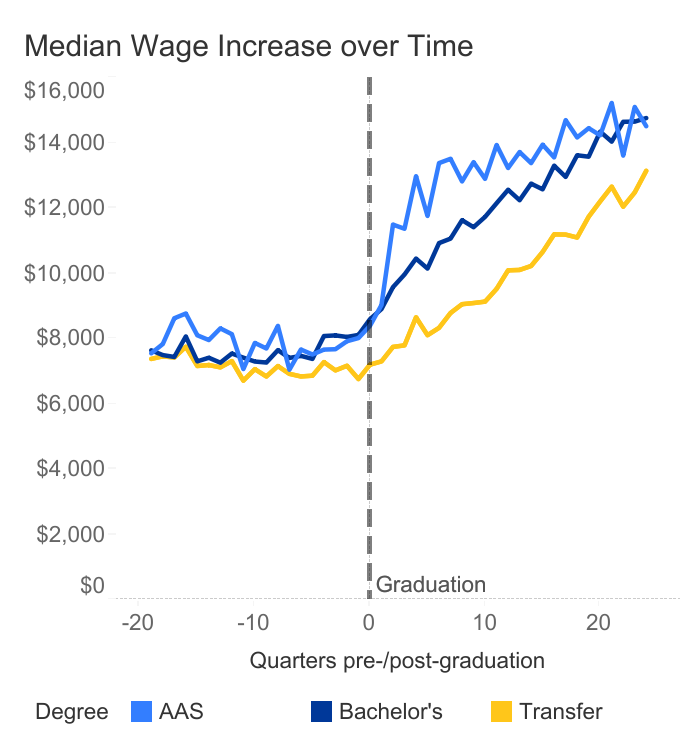Workforce Outcomes for Associate Recipients
Connor Hill, Researcher
November, 2022

Today, the Utah Data Research Center (UDRC) releases research examining workforce outcomes for individuals who received associate degrees.
The study uses data from the Utah System of Higher Education (USHE) and the Department of Workforce Services (DWS). We tracked students’ wages as they entered postsecondary institutions to determine how the degrees they chose impacted their wages. The primary purpose of this research was to illuminate the outcomes of students who received Associate of Applied Science degrees (AAS). Most research combines AAS awards with other transfer associate degrees or “some college” variables that do not capture the unique aspects of AAS degrees.
This research examines associate of applied sciences, transfer associate, and bachelor’s degrees. AAS degrees are typically terminal awards intended to help students receive an entry-level position after completing their education. Transfer associate degrees are awards for students who plan on continuing their education after receiving them. Examples of transfer associate degrees are Associate of Arts (AA) and Associate of Sciences (AS) degrees.
Research usually finds a positive relationship between higher educational achievement and annual wages. Higher educational attainment helps students specialize in a sector allowing for higher wages. Furthermore, since AAS students receive targeted training in a particular field, we might expect them to have higher wages than other degree types immediately after graduation. Since less specialized transfer associate degrees are designed to continue to a four-year degree, we might expect recipients to have lower wages immediately after graduation.
After completing their degrees, the median wage for each award type increased between the first and fifth year after graduating, albeit not equally. Initially, AAS recipients experienced the largest wage growth - their quarterly wages increased by over $3,000 in the two quarters after graduation. Over the same time frame, bachelor’s and transfer associate degree recipients saw their wages increase by less than $1,000 and $600, respectively.

This finding does not imply that wages between demographic groups were always equal. Depending on the statistical test used, women, on average, only experienced approximately 50% of the wage increases between the first and fifth year that men received. Similarly, when analyzing the top five programs that associate degree recipients completed, non-white individuals earned about $1,000 less than their white counterparts.
This research shows that AAS degrees have quarterly wages comparable to bachelor’s degree recipients one to five years after receiving the award. Although this particular research shows similar wages for AAS and bachelor's degree recipients, most other literature shows that bachelor's degree earners have higher wages over time. These findings should be in the interest of the general public and postsecondary institutions.
For more info, check out the data narrative and full report.